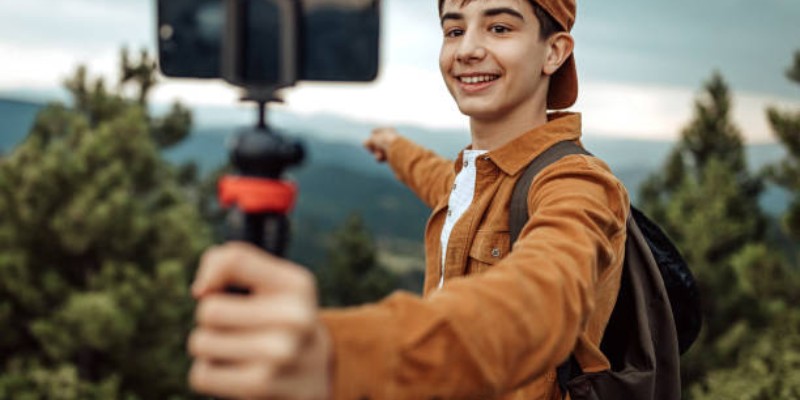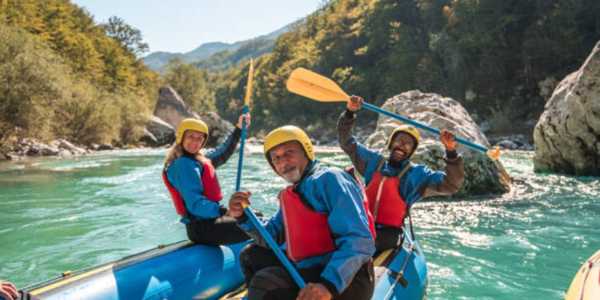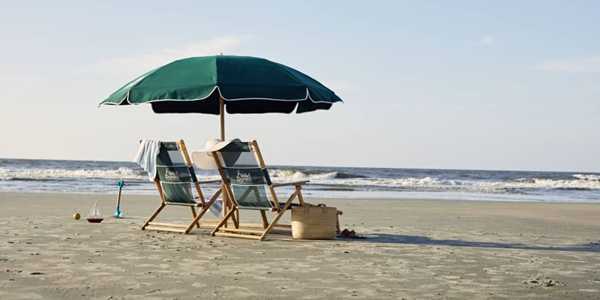Career & Education
How to Document Your Travels Like a Pro Blogger
Some bring back only blurry selfies, while others turn one trip into 20 content pieces and lasting value. The secret isn’t better gear—it’s thoughtful, organized documentation.Here’s what most travel bloggers do that you’re probably not doing yet.
Some bring back only blurry selfies, while others turn one trip into 20 content pieces and lasting value. The secret isn’t better gear—it’s thoughtful, organized documentation.Here’s what most travel bloggers do that you’re probably not doing yet.
Start With a Travel Plan That Includes Content Goals
Most people plan for tickets, hotels, and sightseeing. That’s normal. But a pro blogger adds content goals to their travel plan. They decide ahead what kind of stories they want to tell, how many photos they need per location, what moments they want to capture, and even which reels or blog posts the trip can turn into.

They don’t just go with the flow. They go with a plan.
Before leaving for any destination, prepare a checklist:
Stories to cover (food, culture, landscape, tips, hacks)
Types of content to capture (photos, videos, voice notes, interviews)
Questions to ask locals or guides
Moments to film (sunsets, street life, packing process, unique hotels)
This makes your travel more intentional. And your content richer.
Use Your Phone Like a Toolbox, Not a Toy
A tourist uses their phone for social media, GPS, and quick selfies. A pro blogger uses it as a toolbox. That phone holds:
A good camera with gridlines turned on
A notes app to capture thoughts
A voice recorder for reflections or conversations
A Google Docs or writing app to jot down full blog outlines
A file folder to organize every content by day and theme
If you treat your phone like an asset, it will help you document better than many expensive devices.
Turn on airplane mode when writing or shooting to avoid distractions. Take time every night to back up files. And if your phone is low on space or battery, you’re already playing catch-up.
Take Notes Daily Before the Details Fade
There is no excuse for forgetting what you saw, how it made you feel, or what a local said. By the second or third day, details start to fade. Names of dishes, the exact route to a hidden beach, what someone told you about their hometown—gone. That’s why bloggers take notes daily.
You don’t need to write essays. Just open a notes app or journal and write:
The name of the places visited
What surprised you
Problems or lessons from the day
Emotions or reactions
Funny or deep moments
These raw thoughts later become captions, blog paragraphs, or voiceovers for your content.
Master Photo and Video Composition
Pro bloggers know that their photos are more than proof of being somewhere. Each image tells a story. That's why they learn the basics of photography:
Use the rule of thirds
Don’t always center yourself in the frame
Show wide shots, close-ups, and in-betweens
Capture people in action, not just posing
Avoid over-editing or fake filters
Take photos of signs, ticket stubs, doorways, street art, and quiet corners—not just the tourist attractions. Those little details give your travel story life.
For videos, shoot both vertical and horizontal formats. Talk to the camera sometimes. Walk and talk. Record background sounds like music, chatter, or even market noise. These make your videos come alive.

Organize Your Content Daily
It is painful to come back from a trip and start searching through 4,000 unlabelled photos and videos. Bloggers don’t do that. They sort as they go.
Every night or during rest time, they:
Move files into folders named by date or topic
Rename key files (“sunset hike – Day 2”)
Back up to Google Drive or an external card
Delete junk photos immediately
That’s how they never lose a great shot or forget the idea behind a clip. If you fail to organize during the trip, you’ll struggle during editing.
Tell Real Stories, Not Perfect Ones
Travel blogging isn’t a beauty contest. It’s not always about polished hotels, dream filters, and smiling faces. Sometimes the best content comes from messy moments—missing the bus, trying weird food, losing your way, or learning a lesson the hard way.
Pro bloggers know that real content connects better than perfect ones.
Don’t be afraid to document:
Culture shocks
Disappointments
What you would do differently
Budget breakdowns
Honest ratings
When you show the full picture—good and bad—your audience will trust your voice.
Use Templates for Faster Blogging
A smart blogger does not start every post from scratch. They have templates to plug in their content and move faster. This also helps when you're tired after traveling but still want to publish.
Example template for a location-based post:
Title: [Destination] Travel Guide: What to Do, Eat, and Avoid
Intro: Where, why, and when you visited
Where to stay: Options for all budgets
What to eat: Local dishes and where to find them
Top 5 things to do
Mistakes or surprises
Final tips
By using templates like this, you cut down time spent thinking and increase the number of posts created.
Don’t Rely on Memory—Use Cloud Tools
Travel bloggers often work from multiple devices or switch locations quickly. Relying on just one device or your memory is a trap. Professionals use tools like:
Google Docs for writing on the go
Google Drive or Dropbox for backups
Trello or Notion to track content ideas
Canva or Lightroom for on-the-go editing
These tools make travel content creation easier, more efficient, and more protected from loss or theft.

Know the Content Goldmines People Overlook
Tourists focus on famous places. Bloggers dig deeper. They look for:
Hidden spots locals love
Stories behind traditions or landmarks
Interviews with shop owners or artists
Travel hacks and transportation tips
Safety advice and cultural dos and don’ts
These are the things that turn a regular travel post into something readers save or share. Don’t only document where you went. Document how you got there, how it felt, and how someone else can do it better.
Be Consistent Even After the Trip
Most people drop their content a few days after they return, and then silence. That’s amateur behavior. A real blogger knows how to stretch one trip into weeks of content:
Turn photos into carousel posts
Make reels from leftover clips
Post "what I wish I knew before visiting" tips
Create comparison posts (City A vs City B)
Build a travel packing checklist based on that trip
That one trip you took two months ago can still bring in traffic today—if you document it well and repurpose it smartly.
Travel Documentation Can Open Bigger Doors
Good travel documentation is not just for likes. It can turn into brand deals, partnerships, guest posts, digital products, or even paid speaking gigs.
But it starts from how you treat each trip. Whether local or international, short or long, treat each travel as an opportunity to create timeless content. Document wisely, work smart, and always put storytelling over show-off.
That's how to document like a pro.
Trending










